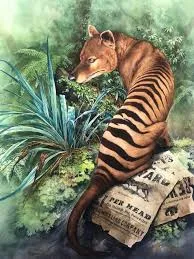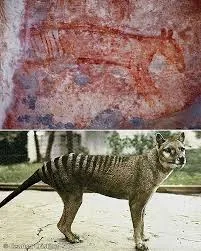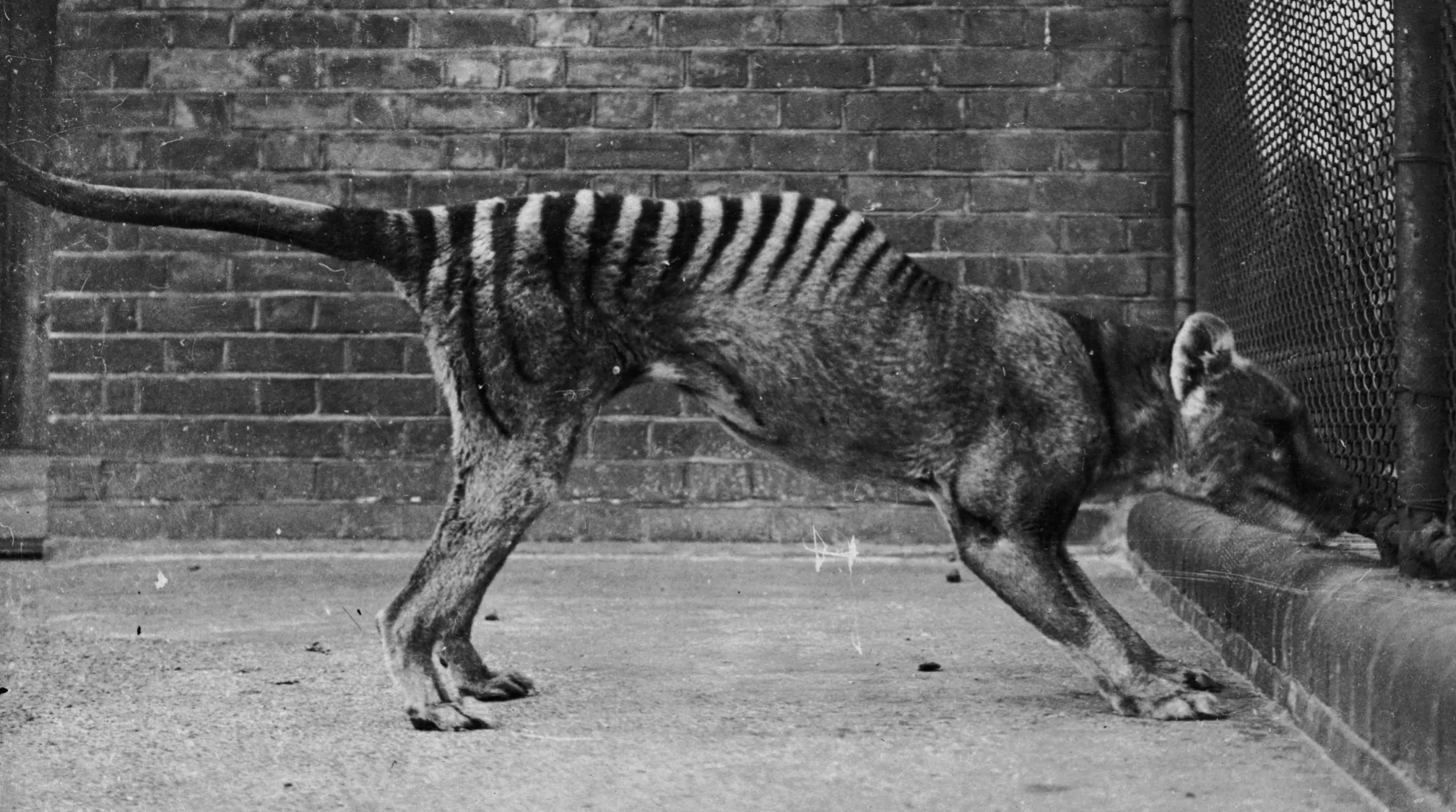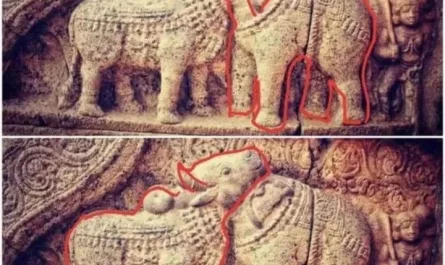The Tasmanian tiger, or thylacine (Thylacinus cynocephalus), a striped marsupial predator once native to Tasmania, mainland Australia, and New Guinea, is immortalized in two poignant images: an ancient Aboriginal rock painting and a haunting 1930s photograph of one of the last known individuals. These artifacts capture the thylacine’s enigmatic presence, from its deep cultural significance to Indigenous Australians thousands of years ago to its tragic extinction in 1936, driven by hunting, habitat loss, and competition from introduced species like dogs. The thylacine’s story, blending natural history with human impact, serves as a powerful reminder of our connection to—and responsibility for—the natural world.

The Thylacine: A Unique Marsupial
The thylacine, resembling a dog with its slender snout, short ears, and distinctive dark stripes across its back and tail, was a carnivorous marsupial, not a canine. Growing to 4–6.5 feet (1.2–2 meters) long, including its tail, and weighing 30–60 pounds (15–30 kg), it was an apex predator, hunting wallabies, birds, and small marsupials. Its pouch, unique among marsupial predators, carried joeys, with both males and females possessing this trait. Fossils and archaeological evidence suggest thylacines thrived for millions of years, with populations on mainland Australia until about 3,000 years ago, likely declining due to competition with dingoes and human expansion.

Ancient Art: A Cultural Connection
Aboriginal rock paintings, found in sites like Kakadu National Park in Australia’s Northern Territory, depict thylacines with their telltale stripes, dating back at least 3,000–5,000 years. These artworks, often in red ochre on cave walls, reflect the deep bond between Indigenous Australians and the land’s fauna. The thylacine, possibly revered as a spiritual or totemic figure, appears alongside other animals in these galleries, which served as storytelling mediums for cultural practices and environmental knowledge. The paintings’ survival, preserved by arid conditions, underscores the thylacine’s significance to Indigenous communities long before European contact, offering a glimpse into a time when it roamed freely.

The Last Thylacine: A Tragic End
By the 19th century, European colonization devastated thylacine populations. In Tasmania, where they persisted longest, farmers blamed them for livestock losses, leading to government bounties from 1830 to 1914 that paid for over 2,000 thylacine kills. Habitat destruction and competition with feral dogs further dwindled their numbers. By the 1920s, thylacines were critically endangered, with the last known wild individual killed in 1930. The final thylacine, named “Benjamin” (though its sex is debated), died in captivity at Hobart’s Beaumaris Zoo on September 7, 1936, neglected during a cold night. A grainy photograph and brief film footage from the 1930s capture its haunting grace, pacing its cage—a stark contrast to the ancient rock art’s vibrant depictions.

The Extinction Debate and Modern Searches
Declared extinct by the IUCN in 1982, the thylacine’s demise is a cautionary tale of human-driven extinction. Yet, persistent sightings—over 5,000 reported in Tasmania since 1936—fuel hope and skepticism. Alleged photos, like a 2021 image of a supposed thylacine family, remain unverified, often explained as misidentified Tasmanian devils or dogs. Projects like the 2022 University of Melbourne effort, using AI and camera traps, and Colossal Biosciences’ de-extinction plan to revive thylacines via gene editing, keep the species in scientific focus, though success remains uncertain.

Lessons from the Thylacine
Like the Dahomey Amazons’ use of cornrows for resistance or the ingenuity behind Newgrange’s solstice alignment, the thylacine’s story teaches resilience, cultural connection, and accountability:

Environmental Stewardship: The thylacine’s extinction highlights the devastating impact of human actions, urging modern conservation efforts to protect species like the Tasmanian devil, down to 25,000 individuals in 2025.
Cultural Preservation: Aboriginal rock art, like the Amazons’ braids, shows how cultural practices preserve knowledge, inspiring us to document and respect Indigenous heritage.
Hope and Responsibility: Ongoing searches for thylacines reflect human hope, but also a duty to prevent future losses, encouraging sustainable practices and biodiversity protection.

A Timeless Symbol
The thylacine, captured in ancient ochre and fading photographs, lingers as a symbol of loss and wonder. Its rock art immortalizes a bond with Indigenous peoples, while its final images mourn a species erased by human folly. As we ponder its possible survival or revival, the Tasmanian tiger reminds us to cherish the fragile beauty of our world, ensuring no more creatures fade from art to ashes.





